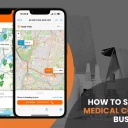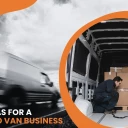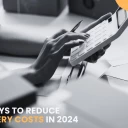Efficient Routes, Seamless Deliveries: Solving Small Business Routing Problems
Updated on
February 22, 2024
by
Jennifer Collins
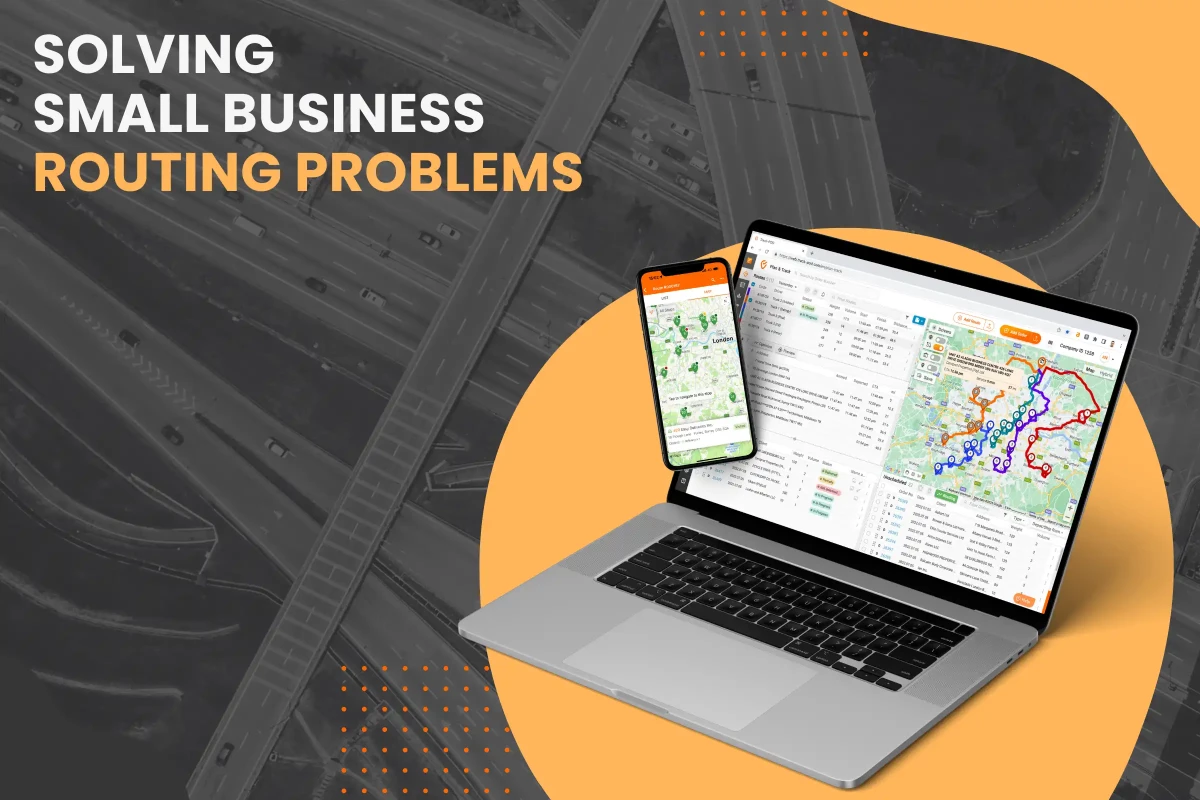
Small businesses can opt for a courier service when it comes to their deliveries, saving themselves the expense of running a fleet of vehicles and the logistical and maintenance problems that are part of life when you run a fleet of delivery vehicles, not to mention the expense.
There comes a time, however, when management should ask themselves whether this method really is saving them money and keeping their customers happy. When business picks u, and the number of deliveries becomes unmanageable, you begin to wonder whether making use of a courier service is still viable or whether it may be time to start running your own fleet of delivery vehicles.
It’s not that simple, however. Managing two or more vehicles becomes expensive as maintenance and fuel costs escalate. Planning delivery routes are a challenge as managers have to deal with many factors that are out of their control.
Customers place pressure on sales and dispatch personnel to prioritize their deliveries; traffic problems and bad weather slow deliveries down, and accidents do happen.
Manual delivery notes are not always clear, and drivers get lost as a result or deliver the wrong parcel. Customers reject stock based on incorrect quantities, oversupply in some cases, and more.
The shortest route is not necessarily the most cost-efficient, as bad roads and traffic problems can cause delays and increase fuel costs. These unforeseen circumstances force managers to re-route their trucks, slowing down the delivery process and moving the customers’ promised or expected time of arrival (ETA) out.
Late or incorrect deliveries upset customers, particularly when it becomes a regular occurrence, and they may just take their business elsewhere.
As a logistics or dispatch manager in a small business, your main priority is to plan your dispatch routes carefully, taking into account road issues and sudden urgent deliveries and spreading the load across the available vehicles in such a way that you maximize route efficiency and save costs.
Understanding the impact of routing problems
Inefficient route planning can result in late deliveries and unhappy customers. If it happens too often, you may lose your customers to the opposition.
Delivery routes should be coordinated to use the shortest possible route while combining as many drop-off points as possible, all of this in one vehicle. When this basic rule is ignored, routes overlap and may even result in customers receiving deliveries from more than one truck on the same day. This clearly results in wasted time and fuel and additional vehicle maintenance costs over time.
When planning your routes with insufficient knowledge of the road conditions, you may inadvertently be sending your vehicles out onto roads that are unsafe and cause damage, thus jeopardizing the safety of your driver and cargo and increasing vehicle maintenance costs.
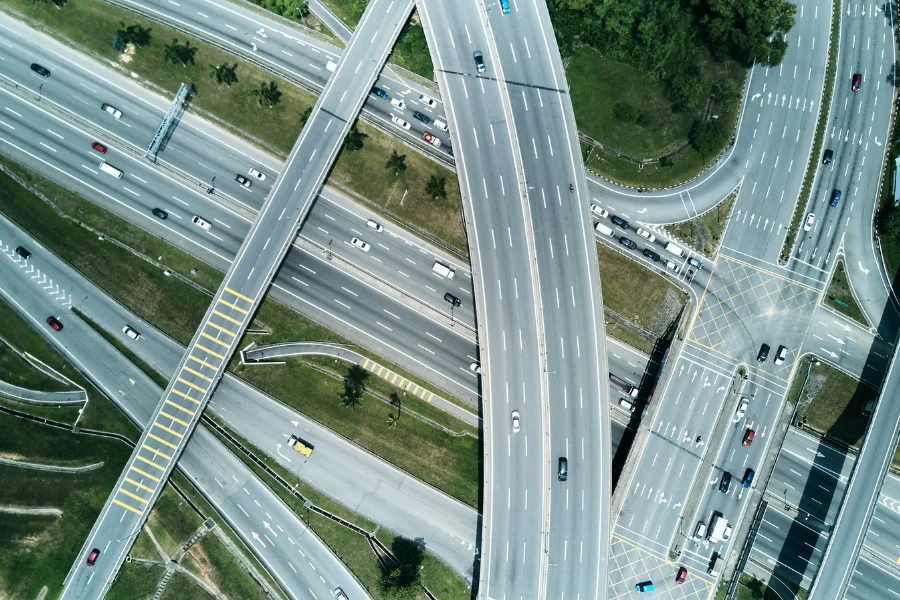
Common small business routing problems
The cost of delivery is said to be roughly proportional to the total distance traveled. By scheduling a number of deliveries per vehicle route, managers can save costs. The aim is to ensure that only one truck stops at each destination; otherwise, the cost-saving exercise is futile.
Careful route planning undeniably saves costs; however, there are other factors to consider when planning a delivery, such as the maximum capacity of the vehicle and the size of the cargo.
If the cargo is too large, the problem is easily picked up and remedied. However, when the maximum weight permitted per vehicle is exceeded, it may go unnoticed, with consequences. The truck will be slower, delaying deliveries and putting pressure on the vehicle’s engine and other components. If this happens often, the lifespan of the truck will be shortened.
Customers put pressure on the sales staff for speedy deliveries, and salespeople, in turn, put pressure on the dispatch personnel to add another parcel or two to their already full load.
A large operation will have software in place with algorithms that plan the route, but often smaller businesses use a manual route-planning system that is more flexible and open to manipulation. As we have seen, it is this manipulation that has short-term cost implications and causes long-term vehicle problems that involve great expense.
Large businesses have weighbridges that can determine the weight of the loaded vehicle, but small businesses don’t have this luxury, and dispatch managers need to take care that the vehicles are not overloaded.
Introduction to Track-POD’s route planning software
As a small business owner or fleet manager, you may consider an automated route planning system an unnecessary expense, as you are managing your own routes quite efficiently at a fraction of the cost, right?
But what if we told you that all your route planning can be done daily with a few clicks of a button?
Not only does this free up time for the person scheduling your deliveries, but it will also free up vehicles and their drivers for use elsewhere. You will be able to manage more deliveries and possibly take on more customers as you do so.
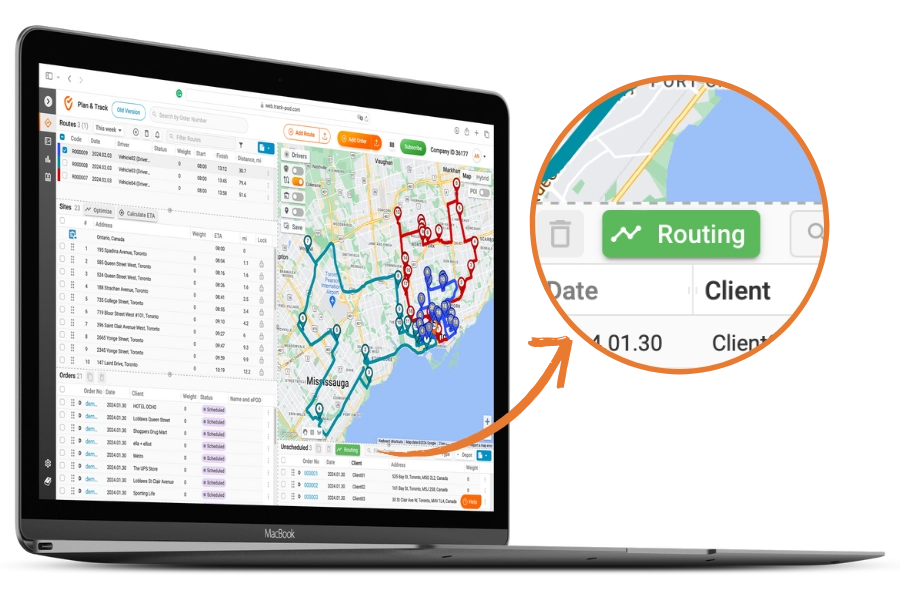
Once on the road, you have the option of a sophisticated tracking app that enables you to monitor your fleet and interact with your drivers while they are en route, giving them up-to-date route information so that they can make decisions about traffic snags and change routes if necessary.
Electronic proof of delivery (ePOD), including pictures, pin codes, signatures, and more, can be set to contactless delivery, removing the need for your drivers to make contact with receiving staff at the various drop-off locations. This helps to minimize human contact, providing additional safety measures for your drivers.
Using Track-POD’s route optimization to solve your routing problems
The route planning software schedules and optimizes all your deliveries based on location, weight, and type of product. It identifies deviations and unnecessary stops while the vehicle is en route and will even warn you if there are traffic problems on the route.
The Track-POD system doesn’t only offer efficient route planning with the click of a mouse but also it handles rejected items, recording their quantity and reasons for rejection. Short deliveries are also recorded for later retrieval by sales and accounts staff, as well as dispatch managers.
Optimize your routes for improved cost efficiency
Once the Track-POD solution has been implemented, small business owners and managers should notice a difference in their financials within weeks. Perhaps the most obvious will be savings in fuel as optimization of the routes settles, and deliveries are more efficient. In the long term, vehicle repairs should drop unless the fleet is an aging one, and driver productivity and delivery statistics should improve.
ACDC Dynamics, a manufacturer and distributor of electrical components, has reported fuel savings of 4% per month since installing the route tracking software in their dispatch areas. They have also managed to reduce their failed deliveries to zero and have not had a need for manual routing since the implementation of Track-POD.
In addition to fuel and vehicle maintenance savings, business reporting will improve, giving managers a more accurate view of the dispatch operations and providing real-time statistics so that they can manage the business proactively.
Enhancing delivery speed and customer satisfaction
The Track-POD solution uses data analytics and smart algorithms to plan routes, ensuring consistency in route planning and speeding up deliveries.
Skuba, a truck and trailer parts supplier in Europe, has testified to faster delivery times with the implementation of Track-POD route tracking. Their customers now receive accurate ETAs via email and have managed to double the number of orders received without having to increase the number of drivers and hours worked.
Girteka Logistics’ 3PL division has reduced customer calls by 80% due to the implementation of Track-POD’s delivery tracking features. Their on-time delivery statistics have reached 97%, and their customers are happy.
Track-POD gives the option of using coordinates instead of physical addresses, ensuring the accuracy of delivery points, saving drivers’ time, and lowering their levels of frustration.
Addressing specific routing challenges
Track-POD addresses specific needs such as route planning, vehicle tracking, electronic PODs, and effective communications with both customer and dispatch personnel. But what about the little extras that make Track-POD a system worth considering?
Deliveries are sorted, but what about returns? For example, collecting empty containers from customers or the collection of previous deliveries that were incorrect. Track-POD facilitates a return waybill, recording descriptions as well as quantities returned.
Your company can reduce its carbon footprint considerably as you go paperless with the Track-POD automated routing algorithms, the photographed PODs that are accessible by your accounts and dispatch personnel, and your customers.
You can display routes and maps on a dashboard in the dispatch office for real-time tracking and route information.
Data analytics facilities enable you to store and retrieve data for reporting purposes. Use our software to create Excel and PDF reports, graphs, and charts for display on your computer screen.
A search and filter option allows you to move jobs around on your electronic scheduling screen.
Track-POD integrates with your ERP and CRM systems with minimum fuss, allowing you to update invoices and inventory systems, as well as customer records.
With a Track-POD system, you can keep customers informed of any problems en route. You can redirect deliveries if there are any problems on the way, such as a traffic accident or roadworks.
Electronic barcode and QR scanning can be enabled, facilitating accurate loading and deliveries. A load confirmation feature makes sure that all deliveries are on board and nothing gets left behind. Petal&Post, a flower and gift delivery company, has integrated Track-POD with its website and sends customers personalized notifications. The load confirmation facility ensures that their drivers don’t leave deliveries behind, a common problem with their previous manual system.
Your vehicles are reasonably safe, as real-time tracking will highlight an unscheduled stop, allowing your dispatch office to establish contact with the driver and provide assistance if necessary.
User-friendly implementation and integration
Implementation of the system is quick and efficient, and users manage to find their way around the system with relative ease.
Integration with your existing software is usually quite simple (when you leave it to the experts), and your system should be running smoothly within a week. Your system users should find it easy to learn and user-friendly as they enjoy the simplicity and value that it adds to their jobs.
Future trends in route planning for small businesses
The wave of e-commerce activity has given small businesses a boost as they expand their customer base with online marketing and sales, often expanding their business and improving their services. The courier and logistics sector has also benefited from this trend as the distribution of goods becomes more sophisticated and challenging in many ways. Need we say it?
Now is a good time for small businesses to optimize their operations by considering automation in the areas that can really make a difference in productivity and long-term cost savings.
Artificial intelligence (AI) is on everyone’s lips today, and the impact it has on businesses, large and small, is set to escalate exponentially in 2024.
According to Statista, a global statistics company, the logistics industry worldwide is expected to exceed 14.08 trillion dollars by 2028. This figure was based on 2022 figures and a growth rate of 5.6 percent between 2023 and 2028.
Conclusion
The ability to plan your delivery routes, track your deliveries and your vehicles, and keep your customers happy is quite an achievement, particularly when you are doing most of it using a manual system. However, you will discover that when you do all of this with the ease and efficiency that an automated system offers, your business should thrive. Track-POD is a one-stop shop for all your logistical automation needs, keeping things simple and running smoothly.



